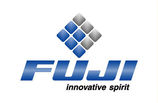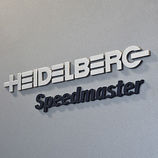Online support HOTLINE: 84-2439437063
|
SUSTAINABILITY A MAJOR MOTIVATOR (PART 2)(25/04/2014)One area in which 3-D printers show a promising future, and are already being put to use, is in the construction of replacement parts. One BMW manager couldn't find an original spare part for his old motorcycle -- so he simply had the item's design reconstructed on a computer, then printed it using an Eos device. Another considerable advantage to applying this new technology to industrial uses is that the hollow spaces and internal struts in printed objects make them both more stable and lighter than the same products when manufactured conventionally -- a combination that is generally difficult to achieve.
"An artificial hip manufactured the traditional way is much heavier than a printed one, which weights just 200 grams (seven ounces)," says Eos head Langer.
This same factor is what makes 3-D printing so appealing for airplane manufacturers such as EADS, with its subsidiary Airbus. Langer is proud to display the design for a hinge that will weigh 60 percent less than those currently in use -- and less weight means less fuel consumption. "Sustainability is a major driver in our industry," Langer says. When designing new components on the computer, he often draws on ideas found in nature. "Birds' bones are incredibly light and incredibly stabile," he points out.
Another far more difficult application of 3-D printing currently being tested is the creation of complete fuel injector nozzles for airplane turbines, produced in a single printing process. Langer calculates that such printed nozzles would allow jet planes to fly up to 2 percent more efficiently, saving millions of euros over the lifecycle of each plane. So far, printed components have only been used inside the cabins of airplanes. Medical Advances Significant progress has also been made in the materials that can be used in 3-D printing, with even objects made from organic matter now possible. Scientists are working on assembling human cells in 3-D printers, composed from materials that the human body uses, such as sugar. Biologists have also been able to print veins and working heart tissue. Eventually the production of entire organs may be possible.
Pharmaceutical researchers are also experimenting with printing individually tailored medications. A computer provides the formula and the printer composes the pill from individual ingredients according to the patient's particular needs. This technique has already proven successful for simple formulations such as the painkiller ibuprofen. The technology has long since proven its benefits when it comes to low-priced customized production in the medical field. It is significantly faster and easier, for example, to print dental prostheses than to have a dental technician shape them by hand. And these prostheses can be printed using whichever materiel the patient desires. For example, one team of surgeons printed an artificial lower jaw for a patient from titanium.
Similar progress is also occurring in the 3-D printing of movable parts. In one example, scientists at American university MIT have printed a functional clock. And Mark Little, director of global research at GE, confidently declares, "One day, we will be able to print an engine."
Staying Ahead of Asia Some even see 3-D printing technology as an opportunity for Europe and the US to reclaim at least certain areas of industrial manufacturing from Asia. These miniature factories require both less material and fewer employees to run them, which makes the production process cheaper. One or two skilled workers are enough to run a professional-grade printer.
Financial hurdles for entrepreneurs looking to enter the market will also be much lower, since it's no longer necessary to construct entire assembly lines before production can begin. Instead, it's possible to first test innovations on a smaller scale, then increase production of those products that prove successful.
The new technology offers great opportunities for any manufacturer, but it also poses serious risks. The 3-D printing process makes it easier for inventors to enter the market, but it makes things easier for copycats as well.
What will the implications be for a German mechanical engineering company when its clients in Mexico or Vietnam no longer need to import replacement parts from Stuttgart, but instead can acquire the digital 3-D blueprint and print their own parts? What will the implications be when a computer file is all that's needed to copy WMF silverware or Gucci sunglasses? One American company has already patented a copy protection mechanism for 3-D printing, and the mass market is likely to follow. Devices for home use have long since joined professional 3-D printers on the market. American manufacturer MakerBot opened its first store in Manhattan a few months ago, where it sells beginners' models for around $2,000. These machines, which are about the size of a crate of beer and print objects from the same plastic from which Legos are made, are certainly not nearly as highly developed or precise as the industrial devices manufactured by Eos, but they are enough to allow a hobbyist to design and produce anything from chess pieces to jewelry.
From Personalalized Products to Space Certainly the same concerns causing sleepless nights for intellectual property experts are also giving others cause for celebration -- and allowing new business models to emerge. "This is the democratization of production," says Peter Weijmarshausen, CEO of Shapeways, the leader in 3-D printing for personalized manufacturing. "Anyone can produce their own dream product." Shapeways, which began as a project of Dutch company Philips, allows its customers either to upload their own designs to the company website or to select from various templates, and the company then manufactures the desired product using 3-D printers.
Shapeways produced 1.5 million objects for its customers this past year, including self-designed jewelry, iPhone cases, lampshades and vases. In the coming year, the company expects that number to reach 6 or 7 million, with its products made from around 30 different materials. This autumn Shapeways opened a new production facility in the New York City borough of Queens, with long rows of 3-D printers of many different types. Many of the printers are indeed "made in Germany," manufactured by Eos in Krailling.
The next big step, Weijmarshausen hopes, will be clothing produced by 3-D printers, tailored exactly to fit each customer's individual figure. "And of course shoes, custom-made for each pair of feet," he adds. Still, such consumer-designed products are likely to remain a smaller operation compared to all the technology's potential industrial applications.
Researchers in California, meanwhile, are testing out printing concrete components to be used in house construction. And NASA, the US space agency, is drawing ever closer to Captain Kirk's Star Trek utopia, using this technology to print engine components for its new Space Launch System. NASA, too, is relying on 3-D laser printing technology made in Bavaria -- the project uses systems manufactured by Concept Laser in Lichtenfels. Translated from the German by Ella Ornstein Other news
|
HTML Code









